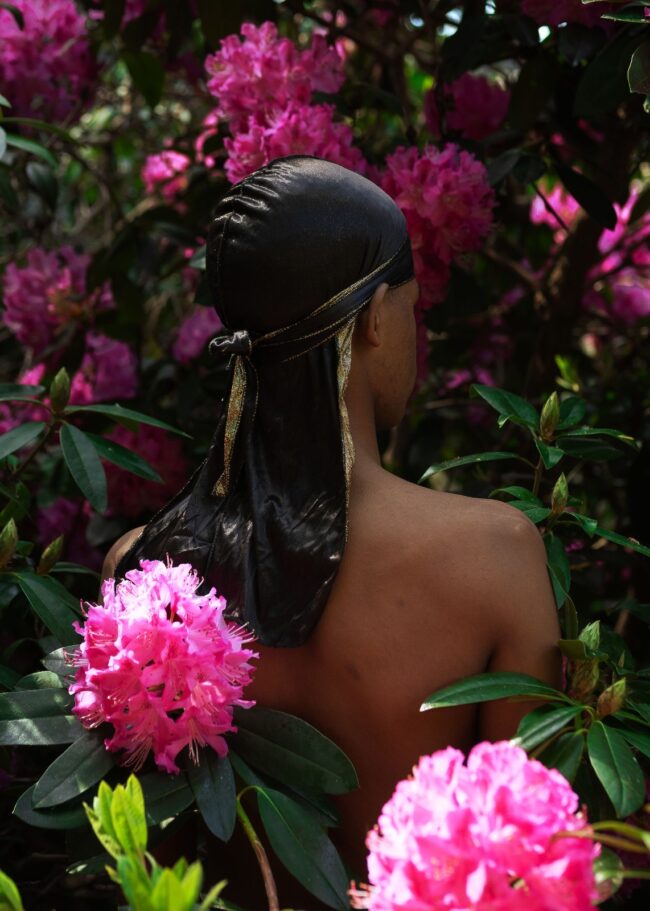

Following on from his 2021 exhibition Hooyo which celebrated headscarves, Rami Hara presents his latest project to date; Do-rag (‘du,?ræg. For this body of work, the artist’s focal point is the durag, a piece of cloth (or wave cap) that is used as a tool for self-care and as a cultural emblem.
The durag has been around for centuries, the term originating in the United States but appearing all over the African Diaspora. Its primary function has always been self-care. Gradually, it has also taken on an important role as a cultural symbol and as a fashion accessory. Like many other representations of black culture, it has been subjected to prejudice. The durag is often associated with gang violence and crime, and more specifically with the way black men have been perceived negatively throughout history. This discrimination was the starting point for Rami Hara, whose aim with this series is to bring attention to the sheer beauty of the durag and its culture. Often inspired by fashion photography, their bright colours and uncluttered environments, this series carries a softness that contrasts with the negative perception of durags and the people who wear them, forcing the viewers to question their own biases. Do-rag (‘du,?ræg is a way for Rami Hara to highlight the everyday simplicity and delicacy of the object, and to reclaim these harmful narratives.
Rami Hara is a Belgian Somalian artist, living and working in Brussels. Self-taught photographer, he graduated from the LUCA School of Arts with a masters degree in Visual Arts. Rami Hara never goes anywhere without his camera, ready to capture his surroundings in an instant. Through his lens, he wants to tell stories and tackle various socio-political issues. Humans are at the heart of Rami Hara’s creative process. Rami Hara’s work brings to light a multicultural cosmopolitan society, enriched by outside contributions. Combining artistic and documentary photography, his work is a testimony to his underlying interest in storytelling. The city is his playground, where he edits his photos in the back of a coffee shop and scour markets for cameras or lenses.
Lorsque vous visitez un site Web, il peut stocker ou récupérer des informations sur votre navigateur, principalement sous la forme de cookies. Contrôlez vos services de cookies personnels ici.